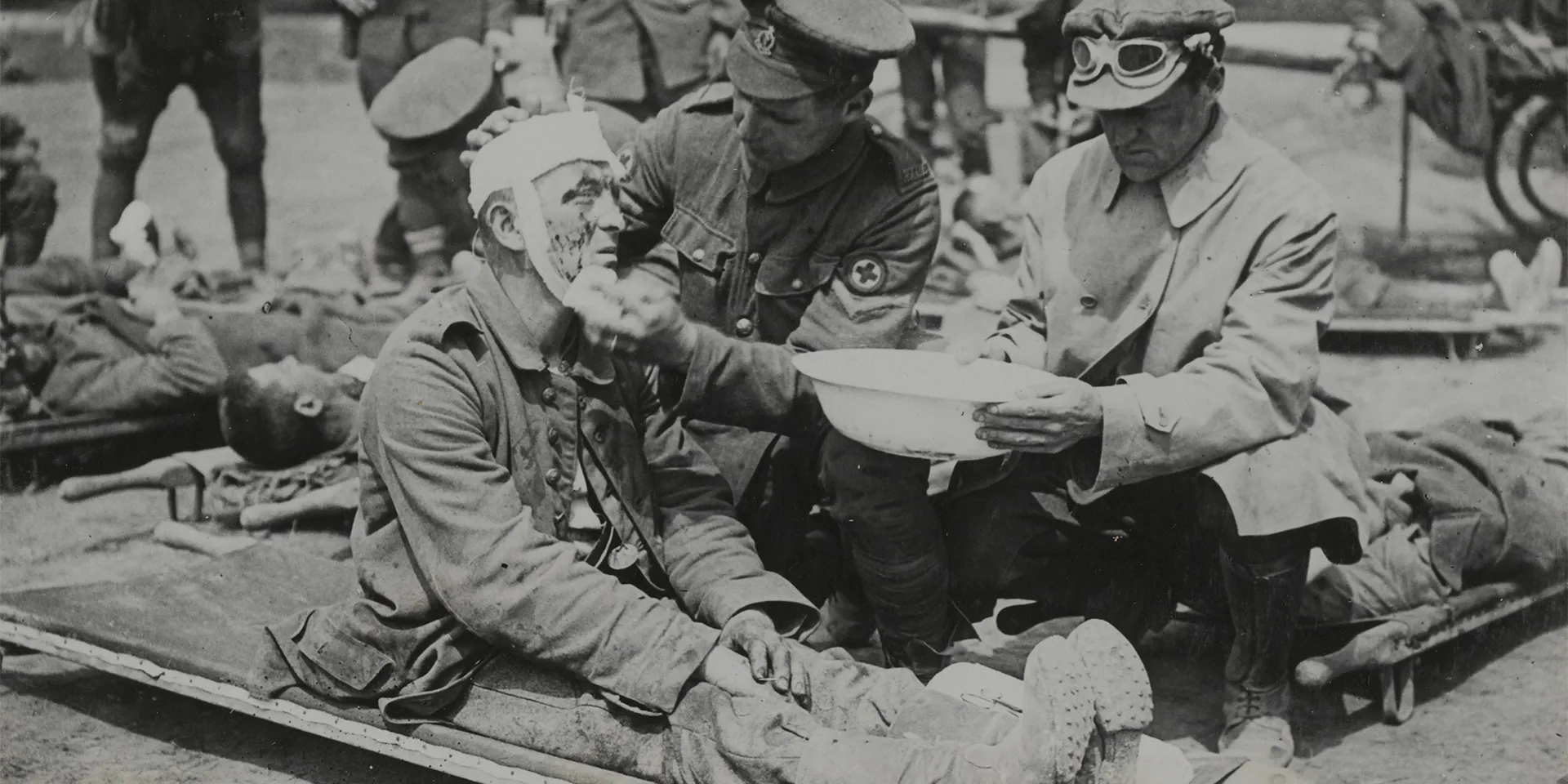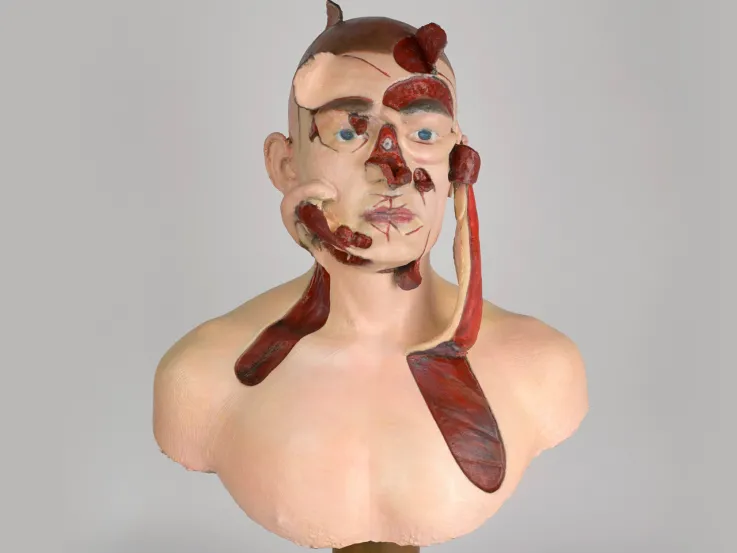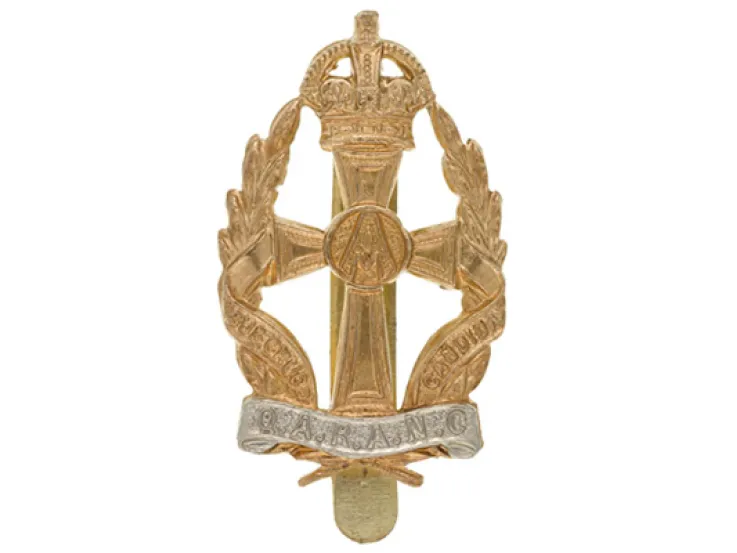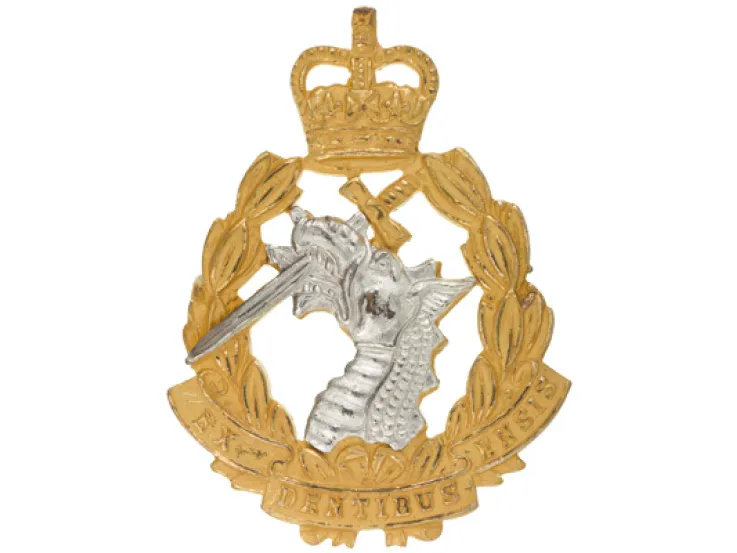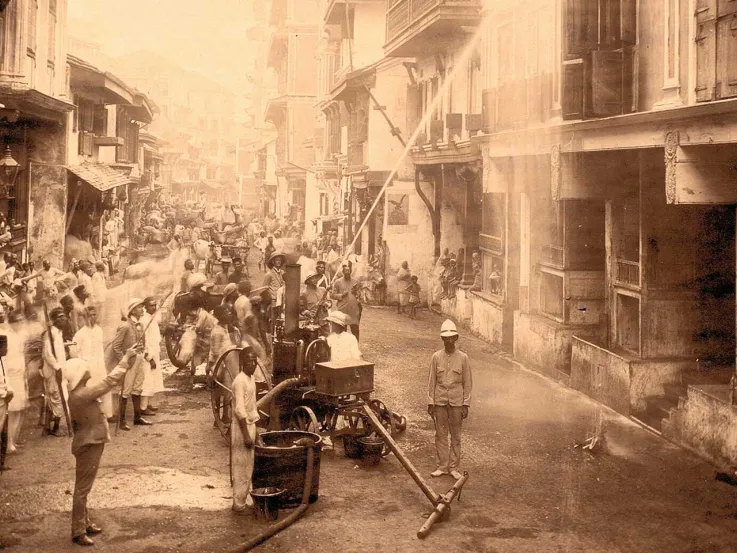Origins
The earliest medical services in the British armed forces date back to King Charles II’s formation of a regular standing army in the 1660s. Each regiment was provided with a surgeon and assistant surgeon, both as commissioned officers. These men accompanied their units in campaigns across the globe.
In 1855, amid severe public criticism of medical provision during the Crimean War (1854-56), a unified corps was formed to source medical personnel from other ranks. This was renamed the Army Hospital Corps in 1857, then the Medical Staff Corps in 1884.
Meanwhile, the allocation of medical officers to each regiment was abolished in 1873. In its place, a centralised service was established, with these officers becoming the Army Medical Staff in 1884.
In 1898, the Army Medical Staff merged with the Medical Staff Corps to form the Royal Army Medical Corps (RAMC), which continued to attend to the health of servicemen and women until 2024.
Rod of Asclepius
The cap badge of the RAMC features a serpent coiled round a staff.
This symbol is known as the Rod of Asclepius, after the ancient Greek god of healing and medicine. It is used by many medical organisations across the world, including the World Health Organisation (WHO).
The regiment's Latin motto - 'In Arduis Fidelis' - translates as 'Faithful in Adversity'.
Deployments
The new unit’s personnel were immediately sent into action in the Sudan (1896-98) and the Boer War (1899-1902). The South African conflict, like the Crimean War, starkly demonstrated the importance of army medical provision and the fatal consequences of ignoring advice on hygiene.
By the outbreak of the First World War (1914-18), the RAMC was recognised as a vital resource for any British war effort. During that conflict, the corps expanded to 13,000 officers and 154,000 other ranks, with its personnel serving in every theatre of war. Of those, 743 officers and 6,130 soldiers were killed.
In 1921, a new dedicated unit, the Royal Army Dental Corps, took on responsibility for oral hygiene.
The RAMC remained at the forefront of new medical techniques throughout the 20th century. It was involved in pioneering facial reconstruction surgery in the First World War, and the use of penicillin and blood transfusions in the Second World War (1939-45).
In recent years, RAMC personnel have deployed to Bosnia (1992-), Kosovo (1999), Afghanistan (2001-14), Iraq (2003-11), and Sierra Leone during the 2014-15 Ebola outbreak.
Honours
The RAMC is a non-fighting arm whose members may only use their weapons in self-defence. This is symbolised on parade by its officers holding their scabbards with their left hand rather than drawing their swords, and by its other ranks never fixing their bayonets.
Despite this, members of the unit (and its predecessors) have been awarded a total of 29 Victoria Crosses (VC). This includes two out of only three VC bars ever awarded (designating a second award of the VC to the same person).
Private Michelle Norris of the RAMC was the first female recipient of the Military Cross (MC), in recognition of her actions at Al Amarah in Iraq in 2006.
Legacy
In 2024, King Charles III approved the amalgamation of the Royal Army Medical Corps, the Royal Army Dental Corps and the Queen Alexandra's Royal Army Nursing Corps to form the Royal Army Medical Service.
Regimental museums
The National Army Museum works with a network of Regimental and Corps Museums across the UK to help preserve and share the history and traditions of the Army and its soldiers.
Discover more about the Royal Army Medical Corps by visiting The Museum of Military Medicine in Mytchett, Surrey.

